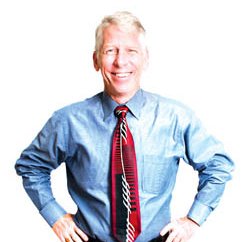
When I was told that I’d be eating caviar on the
Sacramento Area Council of Governments’ tour of the
region’s rural areas, I thought our guide was kidding. Caviar on
what was ostensibly a bus ride through the countryside? Who
would’ve thought it? But it turns out our local caviar is no
joke.
In fact, Sacramento exports more caviar than any other county in the
country. According to Patrick Mulvaney of Mulvaney’s Building and
Loan restaurant, the roe harvested from our local sturgeon is among the
finest caviar available.
That’s just one of the many surprises I encountered on
SACOG’s informational tour last month, which was intended to
better familiarize elected officials with the region’s $2 billion
agriculture industry. The on-the-ground experience will prove useful
when officials begin working on the Sacramento region Rural-Urban
Connections Strategy, a SACOG study group that seeks to enhance the
sustainability of our rural areas; promote the consumption of
healthier, locally grown produce and food; and develop eco-tourism
opportunities.
There was a lot of territory to cover. The full-day trip took us
through places such as Soil Born Farms, Gold Spring Angus Ranch,
Sterling Caviar, R. Kelley Farms, and the towns of Locke and Walnut
Grove. Despite having lived in Sacramento for more than 20 years, I saw
things I had never seen before. The view passing by of wineries,
orchards and the southern county’s flattened landscape was
exhilarating.
It’s a far different view than one gets driving down
Interstate 5. On the back roads, I discovered an ecosystem that has
survived millions of years of evolution—through fires, droughts,
rains and floods. It’s now facing its biggest challenge: humans,
and the environmental havoc they wreak.
We pulled into the city of Locke, an incredibly picturesque town
that’s like a moment frozen from the past. One can very easily
visualize a simpler time: a time without high-definition television,
but with a clear, starry sky. A time without electronic games, but with
the wilderness right at your door.
Those days are gone, at least for now. That reality hit home as the
bus passed by the half-completed Elk Grove mall. Construction on this
oversized, out-of-place box-store complex has slowed due to the
economic collapse. Ultimately, if the mall is ever completed, it will
gather goods from across the world and offer them to us for
consumption. And we will consume them, even if we don’t need
them.
Returning to the city at the tour’s end was somewhat
disturbing. Sprawled across the region there are nearly 2 million
materialistic, energy-consuming but otherwise intelligent citizens,
many of whom aren’t aware of what we’ve lost when it comes
to our region’s natural resources. If they could all just tour
the rural areas of our region, and see what I’ve seen, they might
understand that some ways of the past are worth preserving, and we all
have a choice in the type of community we want to build.
